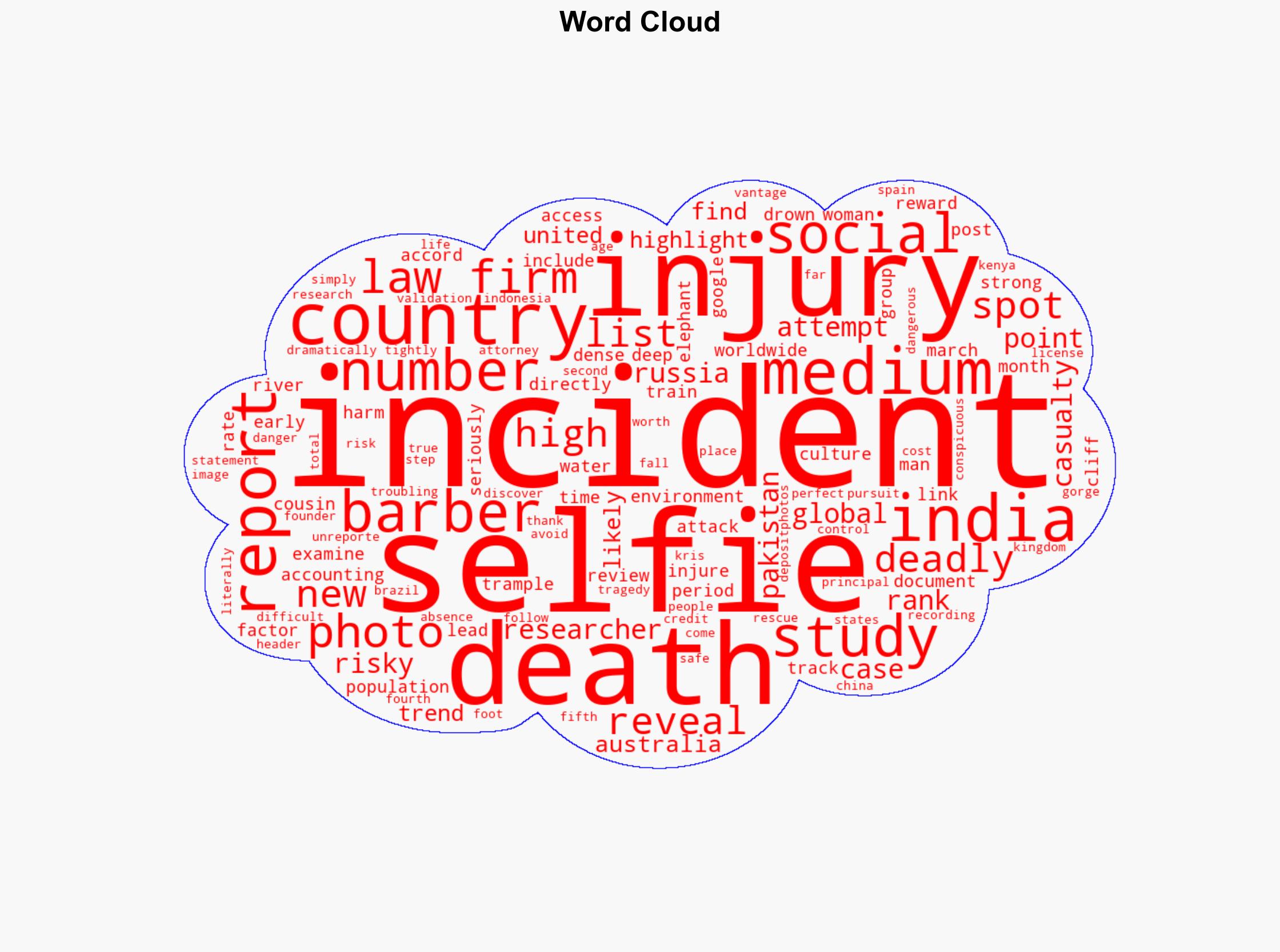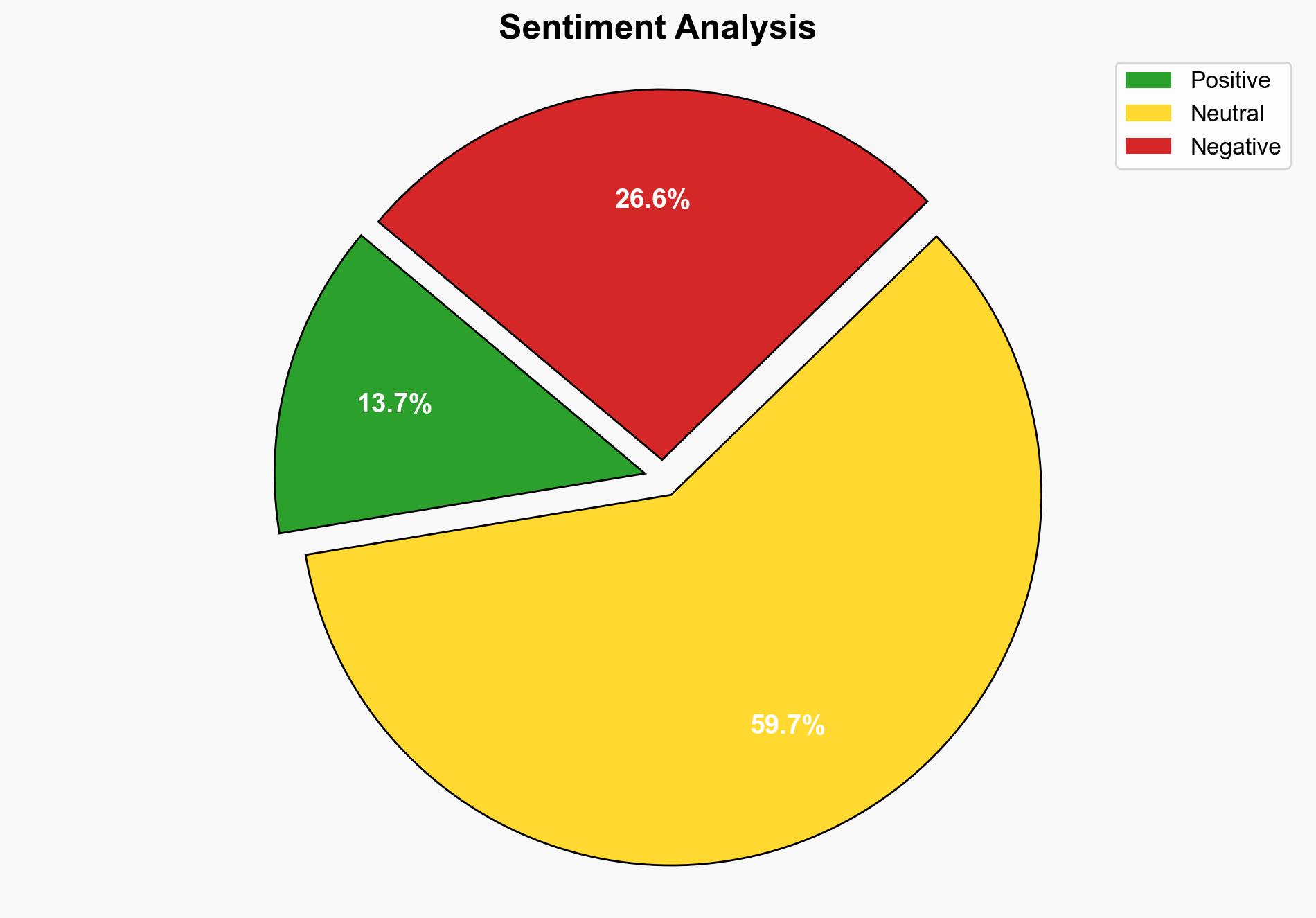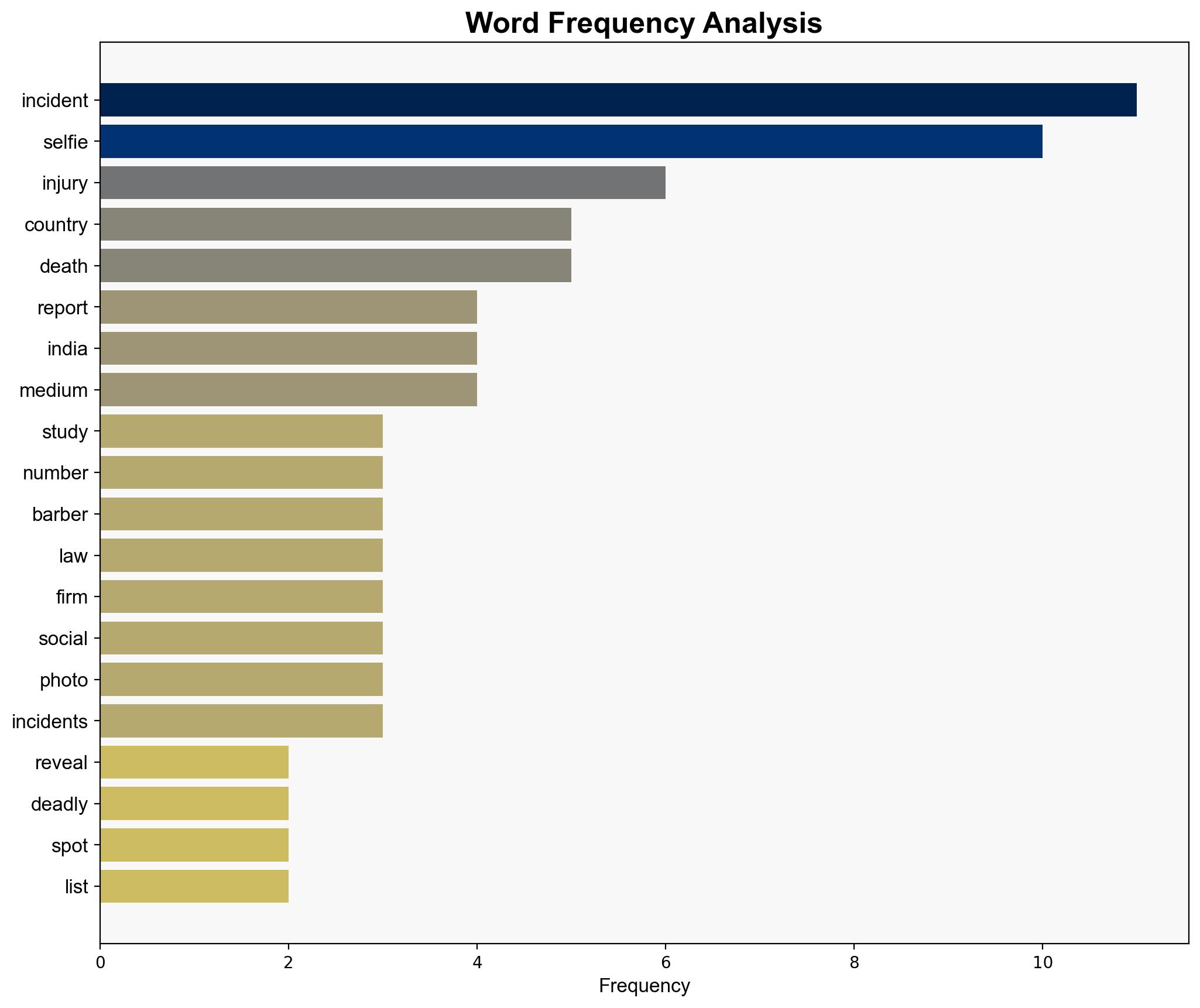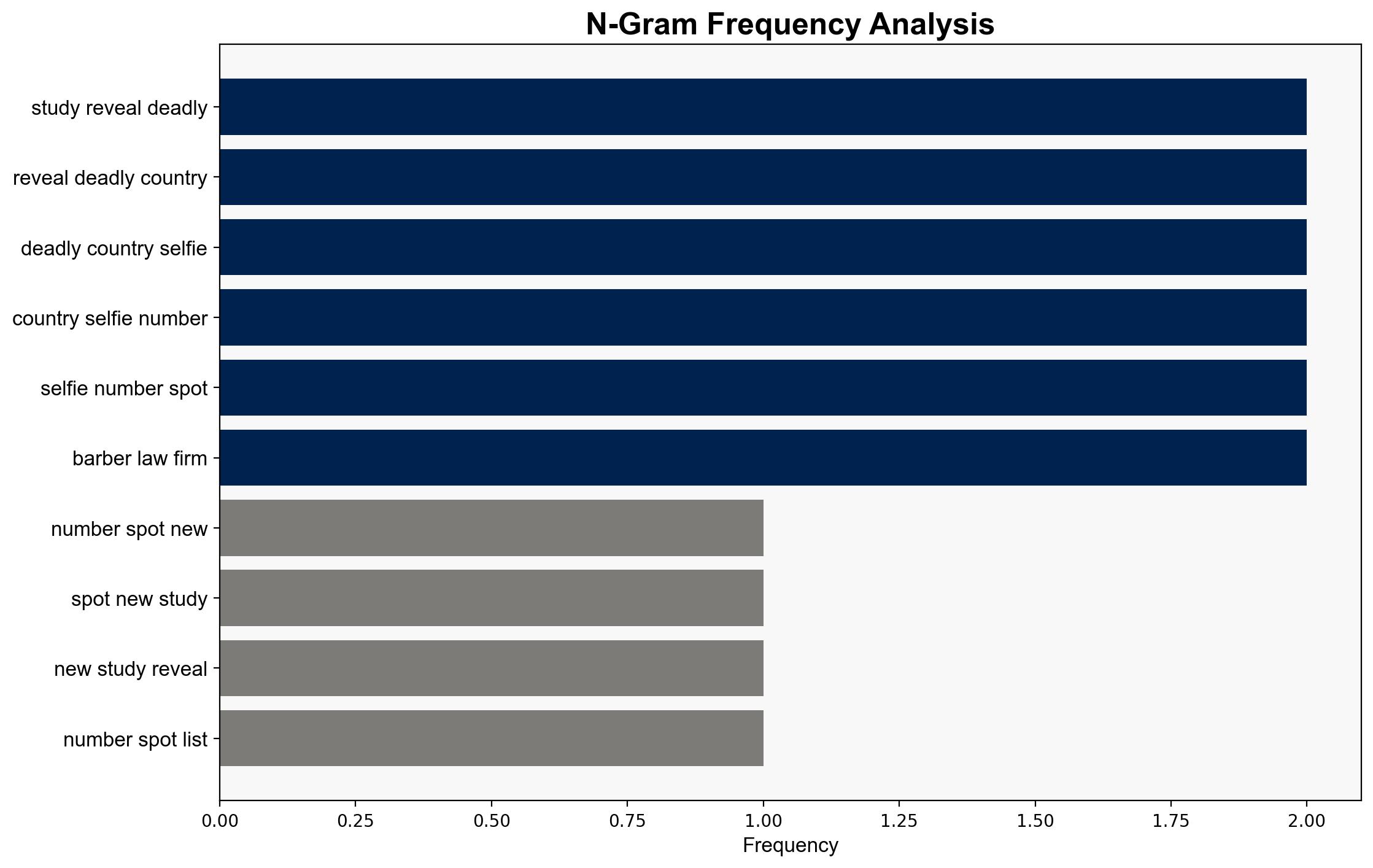Study Reveals Deadliest Countries to Take a Selfie and US Takes Number Two Spot – PetaPixel
Published on: 2025-08-27
Intelligence Report: Study Reveals Deadliest Countries to Take a Selfie and US Takes Number Two Spot – PetaPixel
1. BLUF (Bottom Line Up Front)
The study highlights a significant public safety issue linked to social media culture, with India and the United States leading in selfie-related incidents. The most supported hypothesis is that cultural and environmental factors drive these incidents more than mere population density. Confidence level: Moderate. Recommended action: Develop public awareness campaigns targeting high-risk behaviors and environments.
2. Competing Hypotheses
1. **Cultural Influence Hypothesis**: The prevalence of selfie-related incidents is primarily driven by cultural factors, such as the social media validation culture, which encourages risky behavior for online recognition.
2. **Environmental and Demographic Hypothesis**: The high number of incidents in countries like India and the US is due to environmental factors (e.g., access to dangerous locations) and demographic factors (e.g., large populations), rather than cultural influences alone.
Using ACH 2.0, the Cultural Influence Hypothesis is better supported by the emphasis on social media culture and specific incidents involving risky behavior for validation. The Environmental and Demographic Hypothesis lacks comprehensive evidence, as other densely populated countries do not feature prominently on the list.
3. Key Assumptions and Red Flags
– **Assumptions**: It is assumed that all incidents are accurately reported and that cultural factors are uniformly influential across different regions.
– **Red Flags**: Potential underreporting in countries with restricted media, such as China, could skew data. The reliance on Google News reports may introduce selection bias.
– **Blind Spots**: The absence of data from countries with strict media control raises questions about the comprehensiveness of the study.
4. Implications and Strategic Risks
The trend of risky behavior for social media validation poses public safety risks, potentially straining emergency services. There is a risk of escalation if these behaviors are glamorized. Economically, there could be increased healthcare costs due to injuries. Psychologically, the pursuit of online validation could lead to increased mental health issues.
5. Recommendations and Outlook
- Implement public awareness campaigns focusing on the dangers of risky selfies, particularly targeting youth demographics.
- Encourage social media platforms to promote safety messages and discourage dangerous behavior.
- Scenario Projections:
- Best Case: Successful campaigns reduce incidents significantly, leading to a cultural shift towards safer behaviors.
- Worst Case: Incidents increase, leading to more severe injuries and fatalities, and potential regulatory actions against social media platforms.
- Most Likely: Gradual reduction in incidents as awareness increases, but cultural change takes time.
6. Key Individuals and Entities
– Kris Barber, founder of the Barber Law Firm, who provided commentary on the study.
7. Thematic Tags
public safety, social media influence, cultural behavior, risk management




